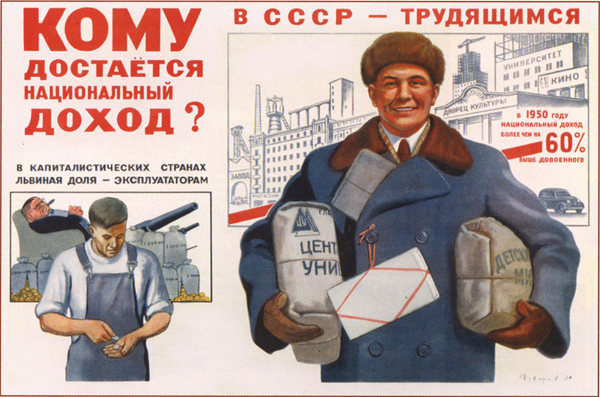Report from KRI #3: UbiSoft on the search for designers
Ubisoft, at a conference of game developers taking place in Moscow, told by its own example exactly how to recruit game designers.
In Russia, as, in general, and in most countries of the former Soviet Union, finding a competent manager or, as it is still called today, a manager is a big problem. The totalitarian past, which has suppressed entrepreneurial inclinations and individualism on the ground for eighty years, is affecting. As a result, for the second decade in a row, the country of victorious capitalism lacks these very managers, to which, without particularly lying, game designers can also be attributed.

Myths and Legends: V. Govorkov’s poster (1950)
Recently, however, the situation has been slowly changing.
A generation is maturing, no longer caught not only the USSR, but even the storming of the White House. Another thing is that it is still difficult to understand whether a designer is standing in front of you or not. It is much easier to evaluate the skill or professionalism of a programmer or an artist. Sometimes a test task is enough. In the case of the search for a game designer, this is not enough: “there is no systematic approach to them.”
Semyon Kovalev, a representative of the Ukrainian division of the French company, told about how this problem was solved at Ubisoft on KRI.
Characteristics and stages
Any company has a list of key characteristics of a potential employee.
Moreover, in this list there are parameters that the employer pays attention to first of all. The latter, of course, are conditioned by the needs of the company at one time or another. At a certain stage, for example, an artisan may be required. Or, on the contrary, if there are a lot of good specialists in the company who have been in the industry for a long time and, to be honest, are a little tired of games, you may need “fresh blood”, a person who is able to take a fresh look at the project, make something original, unusual.
Ubisoft has seven such characteristics: experience, theoretical knowledge, practical skills, understanding of game mechanics, commitment to work, creativity and ability to work in a team. And everything would be great, but how to check all these characteristics?
It is clear that it is possible with the help of an interview, but if you have quite strict requirements for candidates, of which there are many (even those with experience), then if you communicate closely with everyone, it will eat up a lot of time.
How did you get into Ubisoft? They created four, conditionally, stages separating everyone who wants to become their designer from the goal. Three stages are standard: resume, practical test and interview. The fourth and key stage, which is carried out after the CV assessment, is the questionnaire.
Questionnaire
The questionnaire is the cornerstone of the Ubisoft system, which is a list of questions, each of which requires a detailed answer.
What is important: there can be no right answers. What the subject writes will show exactly how he thinks.
“The questionnaire is a kind of essay,” said Semyon. – The practice of writing which is widely spread abroad. The main purpose of the questionnaire is to save time. “Problem areas” and misunderstandings are immediately visible from it. In addition, starting from it, it is more effective to conduct interviews.”
Questions, questions
To bring a potential employee to “clean water”, Ubisoft has created five groups of general and debatable questions.
1. Gaming experience
Questions are asked a la, what have you played lately, what did you like and what did not, what did you pay attention to in these games in terms of mechanics, name your top 5 games, why exactly they are, what you don’t like about them and why, and, of course, so that you would change it.
Questions on gaming experience are designed to reveal the candidate’s knowledge of gaming culture, his ability to analyze and his understanding of game mechanics.
2. Profile questions
This includes questions like descriptions of your favorite genre, requests to name your strengths, as well as comparisons (in terms of who is cooler) free-2-play with freemium, PS3 with Xbox 360 and so on.
3. Basic design issues (general concepts)
This includes questions about the role of a game designer in a team, about the worst thing in game design, about what a fan is.
Here the level of general erudition of the subject is revealed.
4. Theoretical knowledge
This includes all questions about UI (how to do it correctly and why), Level Design (principles of various genres, level lighting), Demo (why in one game it is better to put the initial stage in the demo, and in another – a piece from the middle) and about the tutorial. As Semyon put it, questions from this group immediately give away a person with giblets.
Yes, there are also controversial issues here. For example, why hp in Starcraft and Warcraft are considered differently, or how achievements differ from awards.
5. Practical issues
Questions about creativity: what should be a game for girls, come up with a cool monster, how to control RTS on consoles, and the like.
Actually, everything. It is clear that the answers should not be too large (certainly not full-page) and not monosyllabic. After receiving them, the employer will understand a lot about the person, about his knowledge of the subject, about the type of thinking. And what else does hr need?